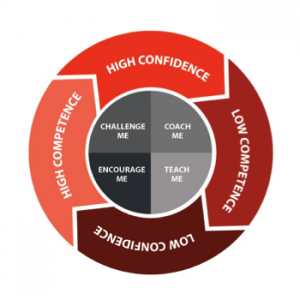
by Julia Felton | May 30, 2020
There has been a lot written about the power of business having a purpose and how with a compelling purpose business can become a force for good, and yet many leaders I speak with really don’t fully comprehend what purpose is and why more than ever it is a pre-requisite for business survival.
Simply put the different between a vision (or mission) and purpose is emotion. Vision and mission statements are logical, they talk to the head part of the business. Purpose is emotional and talks to the heart of the business. So whilst vision or mission articulates goals and tactics for achieving those goals, purpose defines the essence of the business – why it exists, who it exists for and how it makes the a difference in the world.
And continuing using the metaphor of head and heart, whilst the head gets things done (20th century leadership) it is the heart that is essential to pump blood around the body, and so enable the head to operate. This is increasingly why we are seeing a paradigm shift in leadership and purposeful leaders know that the old control and command structures are not going to appeal and be successful in the more collaborative 21st century where people are seeking more purpose and contribution from their work.
A PURPOSE DRIVEN BUSINESS
Many might argue that it is a waste of time defining the company’s purpose because operating results have been fine up to now, and this is just another fad that is taking us away from delivering results. The problem is that the evidence is compelling as to why becoming a purpose driven business is essential for 21st century success. The benefits are not only commercial but also include improving the culture and the well-being of team members
JUST SOME OF THE BENEFITS INCLUDE:
- Customers Want It – 73% of consumers have stated they would change brands if a different brand of similar quality supported good causes
- Buyers Reward You – 80% of the general population would rather pay more for products and services produced ethically
- Employee Well-being – 88% of team members say they feel more fulfilled working for a business that is making a difference
- Increased Productivity – when team members are inspired by a compelling purpose they generate 225% more productivity than team members who are merely satisfied with their role
- Improved Retention and Employee Loyalty – team members who find their work rewarding and impactful report being 2.8 times more likely to stay with a company
- Easier Recruitment – 93% of employees want to work at a company that cares for them as an individual.
- Increased Revenue and Growth – in the past 3 years 85% of purpose driven companies showed positive growth whilst 42% of non-purpose led companies showed a drop in revenue.
CHANGING COMPANY CULTURE
So why wouldn’t a company want to become purpose led and help contribute to the triple bottom line of people, performance, planet? Because it’s tough. Creating a purpose driven culture demands time and resources. This is not some quick fix that can be rolled out and forgotten. Purpose needs to become imbued into the DNA of the company and impact everything that the business does. It’s not just some fancy words on the wall, but rather it demands a culture shift that helps foster an environment where people’s hidden potential can be unlocked. It helps team members understand why they work for the business and clearly articulates for them the contribution that they make. And of course for the purpose to survive the company must adopt behaviors that align with that purpose.
It is the leaders role to activate the purpose within the business and galvanize the team members to come along. Through their behaviors day in and out they help inspire and motivate the team and when they do the result is a highly engaged and productive workforce. Team member well-being improves as they feel more valued in the business and also because they understand the context in which the business is operating and how they contribute to this.
Creating a purpose driven culture really is a win-win for both the business results and the many business stakeholders, but implementing this is not for the feint of heart, and should not be undertaken without a solid commitment to see it through.
Julia Felton (aka The Business Wrangler) is the founder of Business HorsePower. Business leaders, entrepreneurs and executives hire her to accelerate their business performance by harnessing the energy of their people to work more collaboratively together. By aligning purpose with actions the team achieves exponential results as everyone starts pulling in the same direction.
Julia believes that business is a force for good and through designing purpose-driven businesses that leverage the laws of nature, and the herd, you can create businesses founded on the principles of connection, collaboration and community that make a significant impact in the world.

by Julia Felton | May 26, 2020
I don’t think anyone can dispute that now, more than ever, we need great leaders. People who can step up and show others the way. People who take charge, not in an overbearing way, but in a way that inspires others to follow. After all, you can’t be a leader unless others will follow you.
Leaders emerge in all shapes and sizes and from all ranks of the organization and society. Leadership is not something just reserved for the top bastion of an organization. It exists everywhere, and right now we are witnessing some great leadership and also some really poor leadership. I’ll leave you to decide which is which!
To help leaders navigate this situation, I have identified 7 characteristics they need to embody to be successful. These form the acronym LEADERS.
Leaderself
Great leaders understand that they need to look after themselves first, before they can look after others. It’s a classic case of putting your oxygen mask on first before helping others. For many leaders, this means indulging in self-care—which could include meditation, exercise, and eating and sleeping well. There is no one solution that fits everyone, but prioritizing your own well-being is paramount if you are to have the energy to inspire and motivate others.
Engaging
Leaders understand that they need to engage others. This is particularly true when so many team members are working remotely. Leaders need to spend time with these remote workers really understanding their needs and effectively communicating what is happening. During these times you can’t over-communicate—team members, customers and other stakeholders will only feel engaged if they know what is happening. And even if you don’t know what is happening, share that as well!
Adaptable
Being adaptable is a key attribute of a great leader. They are easily able to see the whole picture, recognize opportunities, and then pivot their resources to solve the challenge they have identified. There are plenty of examples of companies adapting to this change. For example, Brew Dog in the UK has pivoted to creating hand sanitizers rather than making beer.
Decisive
Great leaders are decisive. They make the difficult decisions that others won’t. Here in the UK, I think our Prime Minister, Boris Johnson, made some good decisions early on putting us into lockdown. Was it popular? No, it wasn’t—but undoubtedly his actions have saved many lives.
Empathy
A component of emotional intelligence, empathy is the ability to put yourself in someone else’s shoes. Great leaders understand that how they view the situation might be very different from their team members, and indeed everyone is experiencing this situation differently. Taking the time to really connect with team members and understand their concerns is paramount to being seen as a caring leader at this time.
Resilience
Mental toughness is a requirement for leaders at all times, but none more so than now. Being able to bounce back from adversity is imperative, as is being able to maintain a great state of mind. Being positive and encouraging inspires your team to want to follow up. Resilience enables leaders to stay focused and on track, despite everything else that is happening around them.
Solution Focused
One of the great things to come out of this pandemic is the high level of innovation that we have seen. Companies have changed their work routines literally overnight, as team members have had to start working from home. Other businesses—like Brew Dog—have redirected resources to help provide much needed hand sanitizer, whilst some car producers have pivoted to create ventilators. Restaurants have moved into the takeaway market. Product development has been speeded up. For example, James Dyson designed a ventilator in a matter of days rather than months.
No one doubts that this pandemic will totally transform the way that we operate business going forward, and I firmly believe that the leaders that display great leadership at this time are the ones that will enable their companies to survive in the long term. Team members and other stakeholders will remember how they have been treated, and I firmly expect them to vote with their feet, leaving companies where they have not been supported and cared for during these challenging times.
Julia Felton (aka The Business Wrangler) is the founder of Business HorsePower. Business leaders, entrepreneurs and executives hire her to accelerate their business performance by harnessing the energy of their people to work more collaboratively together. By aligning purpose with actions the team achieves exponential results as everyone starts pulling in the same direction.
Julia believes that business is a force for good and through designing purpose-driven businesses that leverage the laws of nature, and the herd, you can create businesses founded on the principles of connection, collaboration and community that make a significant impact in the world.

by Julia Felton | Apr 26, 2020
The COVID-19 pandemic has turned many businesses on their heads overnight, as people have had to adjust to remote working. Many industries that had been resisting allowing team members to work at home have, in a matter of a few days, had to pivot and adapt to this new norm.
For both team members and employers, there have been challenges to navigate along the way. Not least of all is that employers have had to trust that team members will do the work. For some companies that had resisted remote working up to this point, I know they had an inherent distrust in their team members and didn’t believe that the employees would do a full day’s work. Ironically, I often hear of exactly the opposite happening. Stuck at home with their families, some people are gravitating to work as a means of escape and so are working way more than the standard working week hours. I know my brother is one such person. It’s so easy to go back into this office after his kids have gone to bed and just check email again or finalise that report he was writing.
So, how do we find a happy medium—and how do all parties communicate effectively at this time? I’d like to propose the 5 E Framework as a model for helping navigate this change:
Embed The Purpose
Now, hopefully your organisation has a clear purpose that every team member understands. Purpose provides the raison d’etre for the business and, combined with company values, helps everyone have clarity on where the business is going. It provides the true north of what is expected and therefore can guide team members in how to prioritise their work and decision making, when there are no colleagues directly around.
Clear Expectations
When working remotely, it is essential that everyone is clear on what is expected of them. Know what the protocol is for answering emails and responding to messages, what the work hours are, etc. Many people I know feel that they have to respond immediately to every notification that pings on their computer, or else their boss won’t think they are working. This is foolhardy, as all these notifications distract us and, in fact, hamper our productivity. Remember the technology should be there to support you, not negatively disturb you.
Empower Team Members
When working remotely, it is even more important than ever to stop micro-managing your team members and empower them to get the job done. Give them a clear briefing; make sure they have understood the briefing, the deliverables, and the timeline; and then, let them get on with it. Continually checking in to see how they are getting on with the project will just demotivate and frustrate them.
Engage and Connect
In the absence of “water-cooler” chat and seeing colleagues face-to-face, it is important to check in with them and make sure they are okay. Everyone is reacting differently to these challenging situations—so, as a leader, spending time to really connect and find out what is going on for your team members, outside of work, is essential. It helps builds trust and connection, and demonstrates empathy.
Efficient Communication
Ensure that you communicate regularly with your team members when they are working remotely. In this time of rapid change, that might mean a daily check-in call for the team to make sure everyone is on the same page and has all the information they need. It’s amazing how much information you glean when working in an office, and how often people forget to communicate really important things when they don’t see the other person face-to-face. I was recently coaching a client, and her boss had forgotten to tell her the deadline had changed. It wasn’t malicious—it was just an oversight. So, regularly ensuring everyone is on the same page can mitigate this.
Effective virtual communication also means that you need to use the appropriate level of energy. As a leader, it is your job to inspire the team, and your energy and enthusiasm needs to be contagious at this time, in order to keep your virtual team motivated.
I’d love to hear about the lessons you’ve learnt about effective virtual communication at this time!
Julia Felton (aka The Business Wrangler) is the founder of Business HorsePower. Business leaders, entrepreneurs and executives hire her to accelerate their business performance by harnessing the energy of their people to work more collaboratively together. By aligning purpose with actions the team achieves exponential results as everyone starts pulling in the same direction.
Julia believes that business is a force for good and through designing purpose-driven businesses that leverage the laws of nature, and the herd, you can create businesses founded on the principles of connection, collaboration and community that make a significant impact in the world.

by Julia Felton | Apr 10, 2020
Dear Humanity
For centuries us horses and you humans have shared a special partnership. In times past we were your sole mode of transport. We were your partners in battle, in life, and at work ploughing the fields. The railroads are 4 foot and 8.5 inches wide as that is the width needed to accommodate the width of two horses! Our partnership has thrived since the beginning of time and we have worked harmoniously together until you designed those crazy motor vehicles.
With the car you literally sped up your life. You started charging about with little or no sense of purpose. You forgot to stop and pause. You became insular and disconnected from each other and eventually over the years your communication began to disintegrate as you lost the sense of unity, trust and collaboration.
We know that you humans are going through a tough time right now and we horses are here to help you return to your own innate state that you have all forgotten. Would you let our principles of living help guide you to re-connect, re-kindle renew and nourish your soul, as we help you align with the basic principles of nature and the Universe.
Let us share our wisdom of survival and how we have had to adapt to survive over millions of years. After all we’ve been on the planet for over 55 million years and you humans for around 6 million years.
Not since saber tooth tigers and woolly mammoths died out, have you ever been in the position of being the prey. Typically, you live daily as the predator creature on the planet. The coronavirus (COVID-19) is treating you as its prey. You can’t control it and it is impacting your daily lives. Some of you are scared, afraid and uncertain of what to do. No-one on the planet today has experienced a situation like this before, we understand. All our lives we have been prey animals, literally fighting for our lives on a daily, hourly and minute by minute basis, but it is this that has made us strong, powerful, adaptive and creative. We understand your fears and anxieties, so let us share with you the practices that help keep us safe.
- Stay Present, Aware and Grounded. Live in the moment. You never know what is round the corner so be grateful of what you have now.
- If Others Frustrate You, Say Your Piece and Go Back To Grazing. Now is not the time to hold grudges. By living in the moment and focusing on each second and minute you can’t stress about the past or the future.
- Care For Each Other: Look after your herd members and keep them safe. Foster community spirit, unity and harmony.
- Step Up and Play Your Part: In the herd we are all responsible for ensuring the safety of the group. If we don’t do our role we can put the safety of the herd of risk. That is why we are punished with exclusion from the herd. Believe us that this is a really scary place to be as you are alone and afraid for your safety. So co-operate with each other and listen to the guidance of your elders.
- Act With Integrity and Trust The Process: Know that this challenging time will pass and you’ll have the opportunity to design a different world, one more in harmony with nature.
- Know That We Trumps Me Any Day: Foster the spirit of the herd and know we are in this together and can only survive if we work together. Any self-serving behavior (hoarding of toilet paper!) will only serve to alienate each other.
- Slow Down, Be Grateful and Appreciate All You Have: Often you only appreciate things when you no longer have them. As horses we love to hang out together doing something and nothing but we observe you humans never stop. You’re always doing something. We invite you at this time to slow down and reflect. Remember everything in the Universe has a rhythm and this provides certainty. The sun rises and falls daily, the seasons change with regularity throughout the year yet humanity lives at full throttle, pedal to the metal day in day out, and then you flat line as your energy burns out. You’re not designed for this and whilst you know it you can’t seem to get off the treadmill. Use this as a time to make that switch.
- Remember We Are All Part Of The Ecology Of The Planet: We are all inter-connected and inter-dependent. The current crisis is showing you that most clearly. Everything you humans do has a ripple effect. Become aware of how your ripple impacts others because it does even if you’re not consciously aware of it.
Humanity, the coronavirus pandemic is providing you with the gift to wake up and become more aware of the rhythms of nature. For everyone who has been sleep walking your way through life, we urge you to enjoy being in the moment, to slow down and become more aware of your impact on others. We invite you to become more horse like!. Let us show you the principles of how to live in harmony and unity with each other and nature. Let us help you return to your roots and find your unbridled spirit.
We know you can do it. Will it be easy, no, but the results will be transformative and spectacular for all of us – humanity, the animals, plants and planet. Let us help you, our life-long partner navigate these challenging times. Leverage our wisdom to help you create your success and thrive once again.
To Your Unbridled Success
The Herd.
Julia Felton (aka The Business Wrangler) is the founder of Business HorsePower. Business leaders, entrepreneurs and executives hire her to accelerate their business performance by harnessing the energy of their people to work more collaboratively together. By aligning purpose with actions the team achieves exponential results as everyone starts pulling in the same direction.
Julia believes that business is a force for good and through designing purpose-driven businesses that leverage the laws of nature, and the herd, you can create businesses founded on the principles of connection, collaboration and community that make a significant impact in the world.

by Julia Felton | Mar 26, 2020
Many of you might have recently read or seen extracts from Simon Sinek’s new book on the Infinite Game. In it, he suggests that business leaders should stop focusing on short-term (finite) gains and instead focus on the long-term (infinite) game of the business. This is something I wholeheartedly agree with—but it’s nothing new as a concept.
When at school, I clearly remember learning about Japanese theory management and how, in Japan, people were more concerned with the long-term outcomes of what they did rather than the immediate short-term benefits. The challenge for leaders in the West today has become the fixation on short-term results. Public companies are measured by their 90 day success on the stock market. If the CEO fails to make the numbers, the stock price plummets. The result is that business leaders make decisions based on short-term success, rather than considering the longer-term consequences.
When leaders are always seeking to win the game, rather than acknowledge and appreciate that their decisions today have a ripple effect throughout society, the quality of their decision making can be significantly impaired.
That is why it was so heartening to see Paul Polman, former CEO of Unilever, stop publishing quarterly results back in 2010 and informing shareholders that “if they didn’t buy into this long-term value-creation model, which is equitable, which is shared, which is sustainable, then don’t put your money in our company.” Curiously, over the decade that Polman was at the helm, Unilever’s shareholder return has significantly outperformed the FTSE index. What Polman clearly understood was that if you are kind to the planet and the communities in which you operate, that long-term success is inevitable.
So, what exactly are the differences between a finite and infinite approach to business and life? In his book Finite and Infinite Games, the author James Carse identifies the difference as being:
- Finite games have a start and finish. They are played within a boundary. There are rules that shape the play on the field, and whoever is the most powerful at the end of the game wins.
In contrast:
- Infinite games are ongoing. There is no start and no finish. Once you enter an infinite game, the critical asset is endurance and resilience.
What can we learn from nature about having an infinite mindset?
Nature is always playing an infinite game—after all, it has been around for 3.8 billion years. In nature, if you don’t play the game and adapt, you die. Which is why we see so many species that have endured over time simply by adapting to the changing environments in which they find themselves. Contrast this with the abject failure of household brands such as Nokia, BlockBuster, and Kodak—all companies that failed to realise they were playing a long-term game, and so steadfastly resolved not to change and innovate as the environment and changing landscape shifted.
For leaders, really understanding that work is infinite can massively change your perspective on things. Just imagine, if you really appreciated that business was an infinite game, you would stop saying things like: “If I just stay late I’ll get caught up” (we all know that never happens!) or “If I just sacrifice seeing my kid’s event this evening, I’ll be in a better position for work tomorrow.” When we focus on work and business being an infinite game, we realise that it will never stop, there will always be something to do, a pivot to make, a promotion to plan.
The work will never stop—however, as leaders, what we can control is how we respond to this.
When leaders recognise that work is continually evolving (just like nature) and their job is just to harness and direct it in order to get the best overall outcome, it brings a degree of flexibility and freedom to the role. With an infinite mindset, leaders can build stronger, more innovative, more inspiring organisations that are committed to bringing meaning and contribution to their lives.
One of the first steps in creating an infinite business is to create a compelling purpose and vision, something that will make a real difference in the world and which will drive you forward on a daily basis.
Julia Felton (aka The Business Wrangler) is the founder of Business HorsePower. Business leaders, entrepreneurs and executives hire her to accelerate their business performance by harnessing the energy of their people to work more collaboratively together. By aligning purpose with actions the team achieves exponential results as everyone starts pulling in the same direction.
Julia believes that business is a force for good and through designing purpose-driven businesses that leverage the laws of nature, and the herd, you can create businesses founded on the principles of connection, collaboration and community that make a significant impact in the world.

by Julia Felton | Feb 17, 2020
“We need to get rid of rules – real and imagined – and encourage independent thinking.”
–Howard Behar, Starbucks
Great leaders recognize that business success is a team sport and they cannot do it all for themselves. That is why the old paradigm of command and control structures will no longer be a successful leadership model.
There is an unprecedented need to effectively delegate to get everything done; however, there is a spectrum to delegation. At one end of the spectrum are task-based activities that team members are asked to perform, with little understanding of the context of that task; whilst at the other end of the spectrum, delegation becomes empowerment that ultimately morphs into Shared Leadership.
Empowerment vs. Delegation: The Difference
Whilst both empowerment and delegation are important concepts in business, as they involve entrusting others to take on important roles in the business, empowerment is much more of a motivational strategy whilst delegation is more of a doing activity.
When team members are empowered, they are encouraged to take personal responsibility and make decisions based on the situation they find themselves in—which means, from a customer perspective, they can take action to resolve client problems without having to escalate it to a manger, safe in the knowledge that their manager will support the decision they have made.
Great leaders empower others to success by setting the GPS for the business and then rallying the team members to follow. However, team members will only follow if they:
- are aligned with the vision
- feel valued and recognized
- recognize and see value in what they can contribute
When team members understand these aspects, they are able to take ownership for the activities they are responsible for and ensure that the outcomes are aligned with the business strategy, which can be very inspiring for them.
Conversely, delegation occurs when a manager assigns a task to a team members. The task emphasis of the delegation is different the decision focus of empowerment. When a leader delegates tasks, they typically provide details of the requirements, often in a step-by-step manner, including the deadline for completion. There is little or no opportunity for the team member to provide any creativity or innovation to the process, and often learning is limited.
The Delegation-Empowerment-Shared Leadership Continuum
I like to envisage delegation, empowerment, and Shared Leadership on a continuum. At one end is delegation, which is task-focused with no decision making capability and lots of control and monitoring. In the middle is empowerment, where the team member has decision making capability within an assigned framework and therefore less control is required. At the far end of the continuum is Shared Leadership, where the team member and leader are jointly responsible for the task getting completed and work in a collaborative and co-operative way, each individual focusing on their own area of expertise.
Whilst many leaders may be reluctant to relinquish the control needed to engage in Shared Leadership, or its lesser cousin of empowerment, I strongly urge you to shift your thinking on this important matter. Yes, there are times when simply delegating a task may be enough—but the evidence is overwhelming that when team members feel trusted and empowered, they become more engaged. According to the Corporate Executive Board, leaders that can move team members from low to high engagement through empowerment experience increases in productivity of over 21%. Just think about what impact that could have on your bottom line.
If you think you are doing a great job empowering your team, just remember that, according to Gallup, only 13% of the global workforce is highly engaged. That means only 13% of your team are prepared to go the extra mile for you and feel fully satisfied with their work. Just imagine the possibilities and impact on your business if, through empowering more team members, you could increase the level of engagement.
And remember that control and creativity are the antithesis of each other. Control stifles creativity and innovation, the thing that can bring competitive advantage, and it can also dampen team members’ enthusiasm and motivation.
What can you do today to start empowering your team members and making them feel more engaged and motivated?
Julia Felton (aka The Business Wrangler) is the founder of Business HorsePower. Business leaders, entrepreneurs and executives hire her to accelerate their business performance by harnessing the energy of their people to work more collaboratively together. By aligning purpose with actions the team achieves exponential results as everyone starts pulling in the same direction.
Julia believes that business is a force for good and through designing purpose-driven businesses that leverage the laws of nature, and the herd, you can create businesses founded on the principles of connection, collaboration and community that make a significant impact in the world.

by Julia Felton | Feb 5, 2020
I’m sure you’ve heard of the terms Emotional Quotient (EQ) and Intelligence Quotient (IQ); but few people have heard of Adaptability Quotient (AQ), especially as it relates to leadership. AQ is defined as “the ability to adjust course, product, service, and strategy in response to unanticipated changes in the market”—and indeed, the Harvard Business Review characterised it as “the new competitive advantage.” Specifically, leadership AQ examines how adaptive and responsive leaders are to change and how they navigate the ever-changing environment in which they find themselves.
What Low AQ Looks Like
There are many examples of companies that have failed to extol the virtues of an AQ mindset. They include Blackberry, Toys R Us, Blockbuster, and Kodak. These companies have failed to innovate and stay ahead of the rapid changes in technology, and so have fallen by the wayside. They believed and relied on the fact that their current success would be impenetrable and that consumers would remain loyal to them, but in the face of changing consumer demands they were left high and dry. Often this occurred as the companies failed to read the market and really, really understand what the customers desired.
For example, at one time Nokia, the parent of Blackberry, controlled 41% market share in the smartphone market. They believed they were invincible as their phones were more robust, when dropped from 5 feet, than Apple and Samsung. And indeed, whilst that may have been true, the durability of the phone was not what inspired customers to purchase it. It was the apps and functionality. Hence, Blackberry rapidly lost market share when Apple launched its rival, which had much better functionality and performance.
How Leaders Demonstrate High AQ
Companies with a high AQ are able to spot customer pain points and trends, and shift gears to create new opportunities that leverage the company’s core competencies and expertise. In part due to their agile and adaptable leadership style, they are able to create self-managing teams that collaborate together on projects.
Leaders with a high AQ focus on creating a culture where everyone takes responsibility for the businesses success—a place where everyone is engaged and seeking out the best options for the business to thrive and not merely survive. Leaders with a high AQ are masters at empowering their team members to be their best. They delegate decision-making to the front line team members who can make the difference, and they appreciate that in order to become more creative and innovative they have to “let go of the reins” and give team members the space and opportunity to experiment. After all, success only comes from trying new ideas, getting feedback, and recalibrating the experience until it delivers what the customer requires.
Consequently, leaders with a high AQ recognise that the current pyramid style, command-and-control leadership structures no longer work, because the hierarchical structures and fixed routines lack the diversity and flexibility required for rapid learning and change. They appreciate the need for self-managing teams and shared leadership that comes together to address a specific concern and then dissipates once the project is completed. Leaders with a high AQ are able to pivot and quickly and easily respond proactively to events happening around them. Indeed, by keeping the big picture in mind, they are able to see the potential challenges on the horizon and therefore implement adaptability strategies in advance of what is happening.
How do leaders with a high AQ stay ahead of the game?
They study the “underdogs,” the new market entrants, and quickly learn from them. They value outsider’s perspectives and wisdom that challenges the existing status quo. They never rest on their laurels, but instead are always thinking about the best way to innovate whilst paying close attention to the rapidly changing needs of their customers. Take the hotel industry: who would have ever thought the largest “owner” of hotels would never own any bricks and mortar buildings? The same is true of the taxi industry, where Uber came onto the scene to disrupt the traditional taxi service.
Whilst actually measuring AQ is at present virtually impossible, I think we can all agree that leaders that fail to embrace an adaptable leadership style may well become the dinosaurs of tomorrow
Julia Felton (aka The Business Wrangler) is the founder of Business HorsePower. Business leaders, entrepreneurs and executives hire her to accelerate their business performance by harnessing the energy of their people to work more collaboratively together. By aligning purpose with actions the team achieves exponential results as everyone starts pulling in the same direction.
Julia believes that business is a force for good and through designing purpose-driven businesses that leverage the laws of nature, and the herd, you can create businesses founded on the principles of connection, collaboration and community that make a significant impact in the world.

by Julia Felton | Jan 21, 2020
As a leader we are all too familiar with the struggle that often exists between the need to get things done (results) and the need to build and maintain relationships, with clients and team members. As leaders we need to be able to balance both but all too often coaching and mentoring our team members gets relegated down our to do list as business critical activities take precedent. This is a fool-hardy strategy as ultimately it is our team members who get things done, and when they are engaged they deliver exceptional client service and increased productivity and productivity.
So how as a leader do we maximise the effectiveness of our time investing in our people. According to David Dye, President of Let’s Grow Leaders the secret lies in creating a series of micro-engagements. These consistent short development interventions win every time, id used at the right time. So how do you know what to do when?
When team members are struggling with activities it is often as a result of one of two things:
• Their Level of Confidence
• Their Level of Competence
The Confidence-Competence Matrix, created by Let’s Grow Leaders, provides a great framework for determining what is happening for your team members and more importantly how you can help them.

It enables you to identify who needs encouragement, coaching, more challenge, or training. This means that you don’t waste your time or their attention encouraging someone who needs a challenge or coaching someone who needs encouragement.
Now let’s look at each area in turn:
Challenge Me High-Competence/High-Confidence:
This could be a team member in the perfect sweet spot of positive energy and flow, or may be becoming a bit bored and longing for more. At best, they’re your A players, although the high confidence/competence combo can sometimes manifest itself in feelings of superiority, particularly if the rest of the team is weak.
Encourage Me: High-Competence/Low-Confidence:
The good news is you’ve got skills to work with. The low confidence may appear as disengagement, but don’t be fooled.
Coach Me: Low-Competence/High Confidence
This team member needs help seeing their strengths and developmental opportunities more clearly. Offering feedback through 360 assessments, specific examples, and coaching will help bring their skills in-line with their self-perceptions.
Teach Me: Low-Competence/Low Confidence:
This chicken or egg situation is still potentially solvable. Train and teach the skills the team member needs for success in the role. There may also be a skills miss-match, have deeper developmental conversations to determine if there is a better fit for them within your organisation.
I found this model to be invaluable this weekend when trying to ride out my pony Bracken. I wanted to ride her out on her own, without her friends, so I decided to take her to a place she has been before. That way I knew she would know where was going, however I knew being without her friends for support would be challenging. And sure enough whilst she had the competency of being able to get to the destination her complete lack of self-confidence derailed the process.
At first I was frustrated and then quickly realised that what she needed was encouragement. She needed to know that I knew she could do it. She needed me to help her build her trust that she could do that. So rather than ride her I led her in hand along the route. Having me by her side gently encouraging and rewarding her made her feel braver and as we went along she grew in confidence. So much so that by the time we got back to the start of the “ride” she wanted to keep going and do it again. It was a powerful lesson in how knowing how to assess what is derailing our team members performance and then knowing what intervention will best serve them in that moment.
Just imagine how effective you could be with just a few well-chosen words at the right time?. Remember effective team development conversations happen in the moment at work and not just at team review meetings.
Julia Felton (aka The Business Wrangler) is the founder of Business HorsePower. Business leaders, entrepreneurs and executives hire her to accelerate their business performance by harnessing the energy of their people to work more collaboratively together. By aligning purpose with actions the team achieves exponential results as everyone starts pulling in the same direction.
Julia believes that business is a force for good and through designing purpose-driven businesses that leverage the laws of nature, and the herd, you can create businesses founded on the principles of connection, collaboration and community that make a significant impact in the world.

by Julia Felton | Dec 5, 2019
The term wake is a boating term that refers “to the trail of disturbed water that is left as a boat moves in the water.” It can be seen from some distance away, and the size of the wake is typically determined by the speed and the size of the boat. Whatever the magnitude of the wake, the one thing that is certain is that a wake is created. A boat simply cannot move without disturbing the water around it. It’s a physical impossibility.
What Is A Leadership Wake?
In much the same way as a boat leaves a trail behind it, so does a leader. This is all due to the law of cause and effect. Whenever a leader, or anyone else for that matter, enters into a relationship with someone else, they leave an impact (a wake). Whether this is positive or negative typically depends on the interaction, and also the self-awareness of the leader—and most leaders I know have no recognition of the type of wake they create.
Kip Tindell, cofounder, chairman, and former CEO for The Container Store, notes that:
“Someone who’s very mindful of their wake and has the mature and sobering understanding of how powerful [his or her] wake is . . . the kind of person we want to be connected to.”
The way you show up impacts how others experience you, and therefore the quality of the interaction. If you create a positive wake then it helps team members feel a sense of belonging. Consequently, a leader’s effectiveness, long-term and short-term, is directly linked to the quality of the relationships they have with their team and colleagues.
Leaders that use their position and the company hierarchy to create a big wake often create inefficient relationships that alienate team members; this, in turn, undermines the long-term viability of a company.
Great leaders fully appreciate that when they create a positive wake within the business team members feel more engaged and committed to the company. This, in turn, makes the team members feel happier as they recognize they are valued for their contribution.
The Wake of Non-Verbal Communication
Many people I work with are really surprised by the power of their wake, and are unaware of the fact that all the time they are influencing people around them. Your wake is part of the non-verbal communication that we all emit. Our non-verbal communication is the most powerful form of communication we have—and, according to some research, impacts over 55% of our interactions.
I’m sure you’ve all experienced a time when someone has said they are well, but every other visible sign is that they are not. Maybe they are shivering, coughing, hunched up. These are all non-verbal signs that the person is far from well.
Our energy is also part of the suite of non-verbal communication tools that we typically unconsciously use. Our energy creates a wake simply when we enter a room, and this too can create a positive or negative impact with others. If our energy is too large, we can become intimidating to others; conversely, if our energy is contained, we might appear as rather timid and shy. And whilst most of your team members won’t candidly let you know how they experience your wake, my horses have absolute clarity about this. If your wake is too big and rough they simply will not engage and connect with you; and although your team members might, rest assured they won’t be enjoying the interaction and won’t feel connected to you and the business.
Remember: as a leader, you are like the first domino in the pack. Your leadership wake creates a chain reaction that is felt throughout your team.
What wake are you creating—and are you doing this intentionally?
Julia Felton (aka The Business Wrangler) is the founder of Business HorsePower. Business leaders, entrepreneurs and executives hire her to accelerate their business performance by harnessing the energy of their people to work more collaboratively together. By aligning purpose with actions the team achieves exponential results as everyone starts pulling in the same direction.
Julia believes that business is a force for good and through designing purpose-driven businesses that leverage the laws of nature, and the herd, you can create businesses founded on the principles of connection, collaboration and community that make a significant impact in the world.

by Julia Felton | Nov 12, 2019
In today’s VUCA world it is important to have leadership anchors (secure bases) to help us feel safe and secure. I don’t know about you but I often feel that I am being tossed around by all the turbulence that is happening around me. Sometimes I feel a bit like a boat that is being pounded by the waves and when I can’t control these situations it can create anxiety and stress. It’s hardly surprising that given the environment we live into today 1 in 4 people suffer from some form of mental health challenges.
So what can we do to minimise this anxiety? What leadership anchors can we put in place to help us feel secure during these turbulent times.
In his book Care to Dare author George Kohlrieser reveals how when you have an anchor or secure base it can help alleviate anxiety as you feel supported and acknowledged. Having a secure base or bases can help unleash astonishing performance that delivers exceptional results. In fact he defines having a secure base as “a person, place, goal or object that provides a sense of protection, safety and caring AND offers a source of inspiration and energy for daring, exploration, risk taking an seeking challenge.”
What surprised me most by this definition was that:
1. You can have multiple secure bases
2. Secure bases don’t just have to be people, they can be places, goals, objects or activities.
I know in the past I have often thought about security coming from other people but what I realised was that for me my horses are a secure base which is why they make such great partners for me to work alongside. I know they have my back and I trust them explicitly during our workshops to bring their best and challenge my clients in a daring way to step into their leadership greatness and become the person they are destined to be.
In today’s VUCA world business also has an increasing role in creating safety bases for our employees. With team members spending nearly a third of their week at work if they don’t feel safe they will not be as engaged and productive as they could be, and this will have a knock on effect on profitability.
Furthermore, the 2019 People Management Report conducted by the Predictive Index revealed that when team members feel that they have a secure base that gives them what Harvard Business School Professor Amy Cuddy refers to as Psychological safety they are less likely to quit.
“Psychological safety is a belief that one will not be punished or humiliated for speaking up with ideas, questions, concerns, or mistakes”
When leaders create psychological safety then 96% of team members feel that they can approach their boss with problems as they realise that they will not be judged for their ideas or contribution. Contrast this with just 43% of team members who feel they can speak up when there is little or no psychological safety.
In addition the data shows the subtle ways that managers can sabotage their teams and destroy psychological safety (e.g., not valuing employees’ unique skills, not being approachable, and not respecting personal values). While these aren’t outright displays of mistreatment, they still negatively impact the employee experience and contribute to low levels of team engagement.
The first step to creating a secure base with someone and in doing so provide psychological safety is by forming a deep connection with them – a bond. When people feel bonded to each other they trust each other. They know the other person has their back. There is a transparency in the relationship and both parties respect each other and value each other. These bonds are created through “water cooler talk” and actually investing time in getting to know your team members as individuals. Leaders need to know what makes every team member tick so they can effectively inspire and motivate them to be their best.
However, the rub here is that very few leaders can be an effective secure base for someone else if they don’t have their own secure base. This is one of the reasons that we often describe success in business as being a team sport. Few people can design a successful life without the support of others, and those that put success ahead of relationships often end up as “independent loners” and can often suffer from illness, addiction, depression and chronic loneliness. Conversely, those that put relationships ahead of goals can often end up failing to live up to their full potential.
So my challenge to you today is to get clarity on who or what are your secure bases, and where do you provide this role for others?. It can be really enlightening to understand where these drivers lie and how they impact you. Please share your thoughts with me.
A special thanks to Marie O’Hara and Coaching York for inspiring this post.
Julia Felton (aka The Business Wrangler) is the founder of Business HorsePower. Business leaders, entrepreneurs and executives hire her to accelerate their business performance by harnessing the energy of their people to work more collaboratively together. By aligning purpose with actions the team achieves exponential results as everyone starts pulling in the same direction.
Julia believes that business is a force for good and through designing purpose-driven businesses that leverage the laws of nature, and the herd, you can create businesses founded on the principles of connection, collaboration and community that make a significant impact in the world.
















